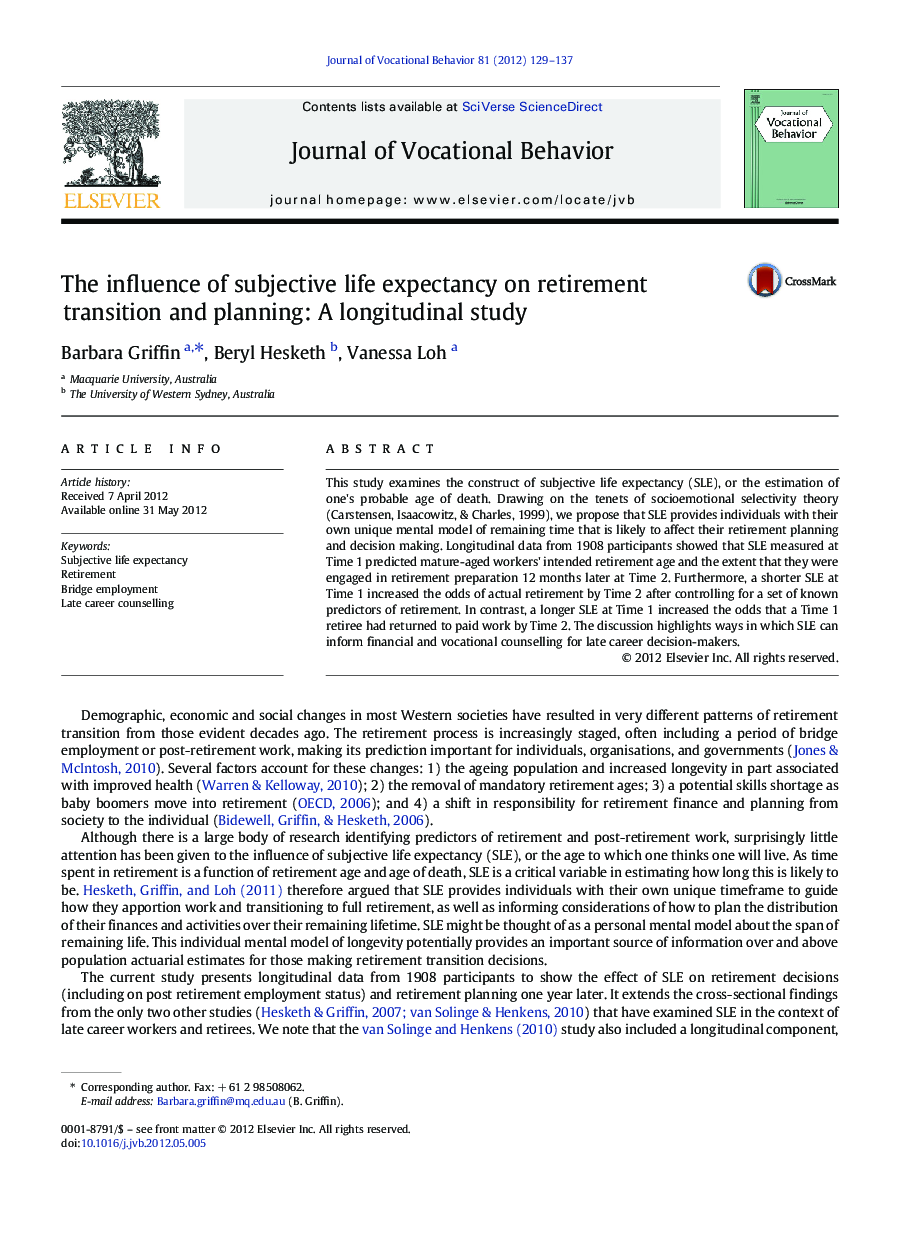| Article ID | Journal | Published Year | Pages | File Type |
|---|---|---|---|---|
| 886898 | Journal of Vocational Behavior | 2012 | 9 Pages |
This study examines the construct of subjective life expectancy (SLE), or the estimation of one's probable age of death. Drawing on the tenets of socioemotional selectivity theory (Carstensen, Isaacowitz, & Charles, 1999), we propose that SLE provides individuals with their own unique mental model of remaining time that is likely to affect their retirement planning and decision making. Longitudinal data from 1908 participants showed that SLE measured at Time 1 predicted mature-aged workers' intended retirement age and the extent that they were engaged in retirement preparation 12 months later at Time 2. Furthermore, a shorter SLE at Time 1 increased the odds of actual retirement by Time 2 after controlling for a set of known predictors of retirement. In contrast, a longer SLE at Time 1 increased the odds that a Time 1 retiree had returned to paid work by Time 2. The discussion highlights ways in which SLE can inform financial and vocational counselling for late career decision-makers.
► Subjective life expectancy (SLE) is the age a person thinks they will live. ► SLE is conceptualised as a mental model of time remaining. ► SLE predicted intended retirement age and amount of retirement preparation. ► SLE measured at Time 1 predicted actual retirement a year later. ► Higher Time 1 SLE increased the odds that a retiree would return to paid work.
